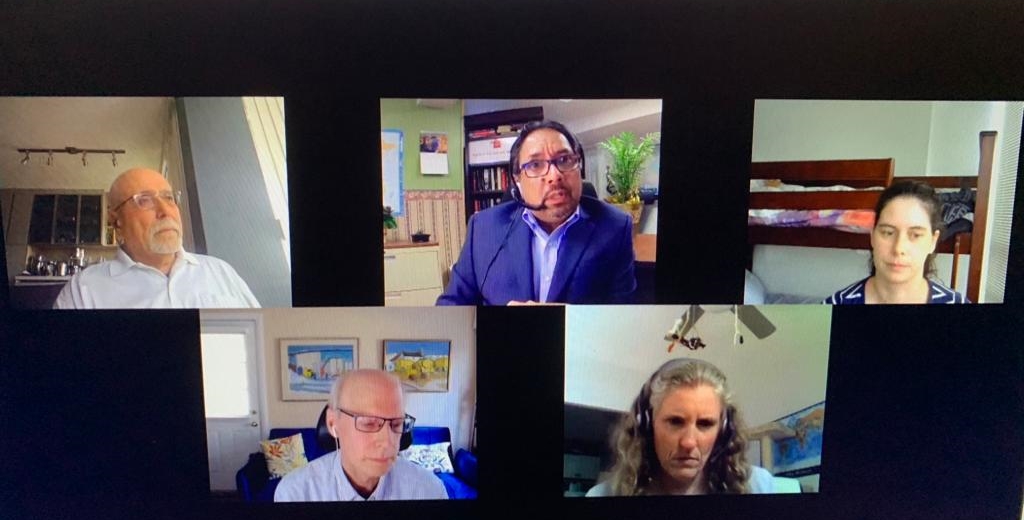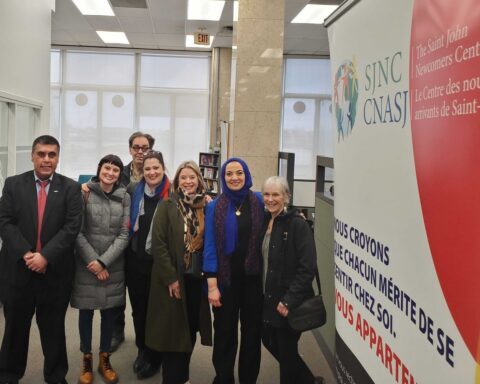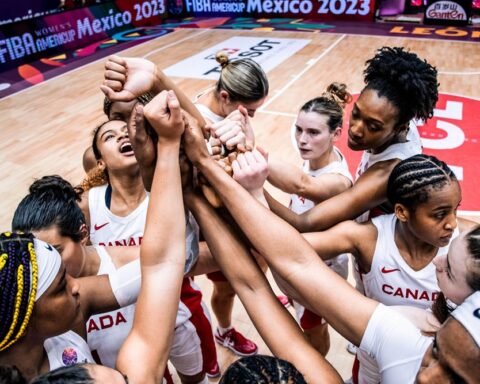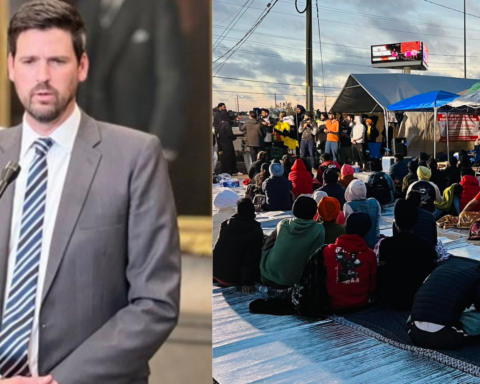Even though ethnic media have been consistently contributing to the “evolution of democracy in Canada” for over 40 years, there is still no “embedded policy” to protect and promote it, according to Madeline Ziniak, chair of the Canadian Ethnic Media Association.
“The (Canadian Radio‑television and Telecommunications Commission) hasn’t really paid attention to the ethnic media policy review for three decades,” Ziniak shared on Oct. 8, during the final day of the 4th annual Metropolis conference on multiculturalism. The CRTC is an independent public regulatory body created in 1976 with a mandate to regulate and supervise broadcasting and telecommunications in the public interest.
Currently, a complaint system under the Canadian Broadcast Standards Council (CBSC) accepts broadcasting media complaints, including from multilingual media. But besides checks and balances, said Ziniak, it’s necessary to have a “first building block” in the form of embedded policy for multilingual ethnic media as well.
“This way, it can continue to evolve and thrive where necessary,” she said. “And that certainly has not been happening.”
Financially crunched
Two years of the pandemic have served as a litmus test for ethnic media, which the panellists agreed helped stave off a bigger disaster by communicating with various communities otherwise missed by mainstream media.
Ethnic media survived and excelled due to its presence in communities, which is beyond borders for traditional media, particularly regarding language proximity and cultural affiliation.
Financial challenges and ethnic media monetizing were some of the questions raised at the session.
Irrespective of the category of the media, advertising dollars is important to many outlets. But “there’s a distinction between church and state, and it is a challenge for any publisher to maintain a wall between the two,” said panelist George Abraham, New Canadian Media’s publisher.
“It would be unrealistic to say that ethnic media is not challenged on that front.”
Because of the localized reporting, local and community advertisements keep multilingual media alive.
Panellists also discussed the need for more significant support from all levels of government, as retail advertising support is but a drop in the bucket. Broadcasters are disappointed by the amount of government funding offered during the Pandemic.
“There’s no denying the fact that the government did provide the support, but it came too little and was too late,” Yudhvir Singh Jaswal, CEO of Y-media in Brampton, said in a separate interview following the conference.
Jaswal said he appreciated the support as a wage subsidy, rent subsidy, loans and federal government funding for print and television. In contrast, however, support for radio production was negligible, and he had to pay a significant amount to the stations for airtime.
“It’s the municipal government that has put advertisements with us, producers, directly,” he said, whereas the federal and provincial governments placed ads with the stations, who are already charging airtime to producers.
“Governments should support both the producer and the station, but they are not supporting the producer,” Jaswal lamented.
Seeking equity
Andres Machalski, founder and president of Canada’s only ethnic media monitoring and analysis operation, MIREMS, has been observing ethnic media since 1988, from both the advertising and editorial perspectives.
His observations suggest ethnic media carry their audience with them and find their way as part of the community’s fabric.
“Community consult newspapers to see what’s on sale in different stores in their district, and of course they read news and editorials,” he said.
Malchalski’s compiled years of his observation in 12 tips for how to develop Equitable and Inclusive Ethnic Media Relations in a Diverse Reality.
Among some of the most salient findings are that multilingual media in Canada is highly unique, with research suggesting such a strong, organized, diverse media landscape is not present anywhere else in the world. He also found that local/community advertising is the lifeblood of these outlets, with the least expensive channels to support being radio and web, while print and television require greater infrastructure in advertising revenue.
In terms of outreach and involvement, Malchalski found that ethnic media does a great job at focusing on engaging stories with a “what’s in it for them” approach. Multilingual media relations also highly depends on outreach to journalists and overcoming that mutual fear of an unknown language.
He also suggests to stop segregating ethnic media, particularly through practices such as holding meetings with ethnic media separate from mainstream media conferences.
“This is using diversity as a form of exclusion,” he notes.
Best days ahead
Regarding ethnic media monitoring, Ziniak said “local communities are very vocal…if there’s something not interpreted correctly or not sitting right with the community.”
Recalling the recent federal election, Ziniak said, as an example, “some of the parties did not have the Chinese vote because there were no overtures to those communities.”
She noted that ignorance of the multifaceted, diverse communities in Canada presents a problem, as audiences are not connecting to those who want to communicate with Canadians.
Abraham elaborated that although Canada has a vibrant ethnic media industry, it hasn’t come into its own in a broader sense.
“I think its best days are probably ahead rather than behind us, despite a very long history,” he said.
Tazeen is based in Mississauga and is a reporter with the New Canadian Media. Back in Pakistan where she comes from, she was a senior producer and editorial head in reputable news channels. She holds a master’s degree in Media and Communication and a certificate in TV program production from Radio Netherlands Training Center. She is also the recipient of NCM's Top Story of 2022 award for her story a "A victim of torture, blogger continues fight for human rights in Pakistan"





